
Registration open for #Fungal26 genetics-gsa.org/fungal-2026/ at Asilomar.
16.10.2025 17:59 — 👍 23 🔁 17 💬 2 📌 1@fungalcell.bsky.social
Fungi researcher, hyphae and mycelium decomposers, symbiotes and distributors https://fungalcell.com/

Registration open for #Fungal26 genetics-gsa.org/fungal-2026/ at Asilomar.
16.10.2025 17:59 — 👍 23 🔁 17 💬 2 📌 1The koji-fungus, Aspergillus oryzae, traditionally used in Japanese brewing, is now widely used to make enzymes.
It seems its capacity for enzyme production is thanks to its unique ability to proportionally increase cell volume and nuclear number.
buff.ly/bPSNRL6

A timetree of Fungi dated with fossils and horizontal gene transfers
www.nature.com/articles/s41...
Remarkable cellular adaptations in domesticated fungi.
Version of Record, koji-kin 麹菌 @eLife
The increase in cell volume and nuclear number of the koji-fungus Aspergillus oryzae contributes to its high enzyme productivity.
elifesciences.org/articles/107...

Hidden Allies: Decoding the Core Endohyphal Bacteriome of Aspergillus fumigatus
#EnvironMicrobiol from Cristina Silva Pereira
enviromicro-journals.onlinelibrary.wiley.com/doi/full/10....
Thrilled to have our spatial single-cell atlas of the Arabidopsis lifecycle in @NaturePlants. Turns out that its easy to make nice images when spatial expression of 1,000 genes is available! 1/n
@natanellae.bsky.social @tatsuyanobori.bsky.social @joeecker.bsky.social
www.nature.com/articles/s41...
We have posted our latest preprint. We explore how an endophytic fungus promotes plant growth and fitness under fluctuating nitrogen-limited conditions in both field and laboratory settings, in additively with bacteria attracted to its hyphae. We hope you enjoy it!
08.08.2025 02:57 — 👍 9 🔁 5 💬 0 📌 0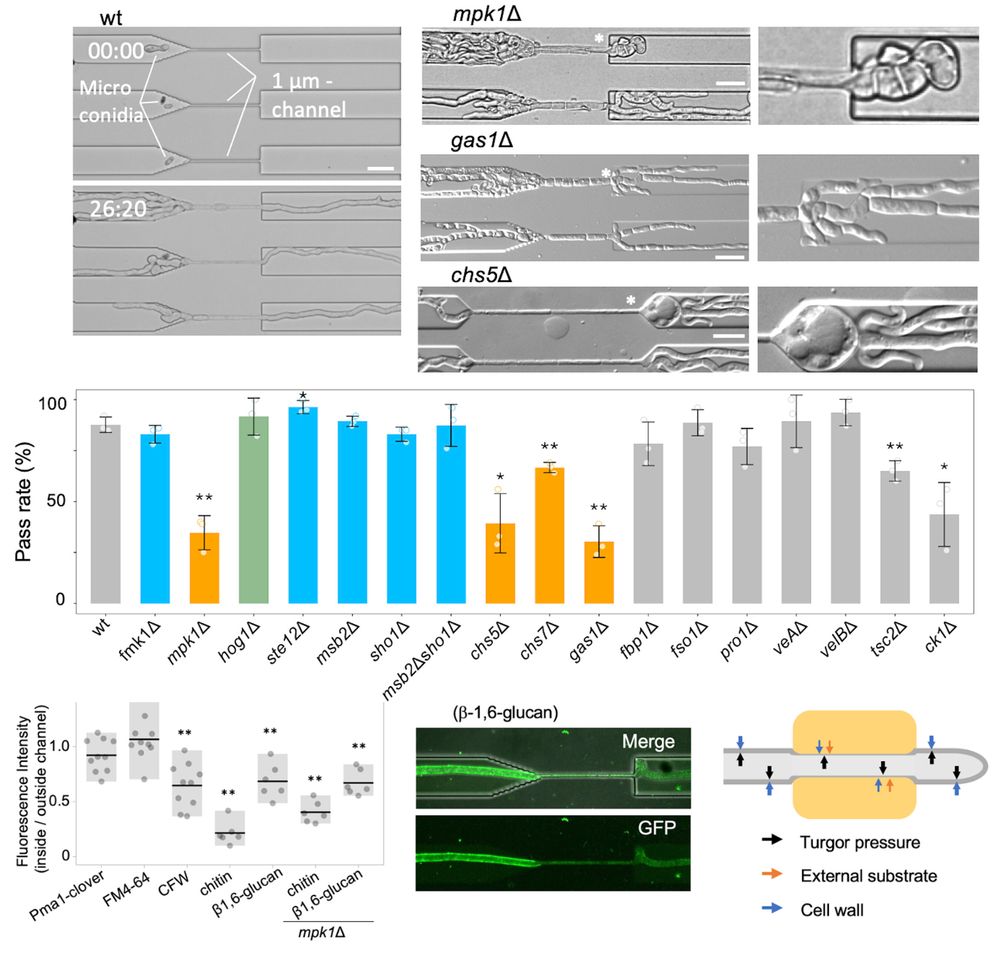
Cell wall remodeling in a fungal pathogen is required for hyphal growth into microspaces. #mBio This study highlights the critical role of hyphal plasticity and cell wall remodeling in the pathogenicity of Fusarium oxysporum by genetics and micro-channel devices. journals.asm.org/doi/10.1128/...
04.07.2025 08:01 — 👍 6 🔁 2 💬 0 📌 0Our reviewed preprint on koji-fungus is out @eLife. We analyzed why Aspergillus oryzae is an excellent enzyme producer and discovered a trait, 10-fold increase in hyphal cell volume and nuclear number. Interestingly, this also applies to other industrially bred fungi.
doi.org/10.7554/eLif...
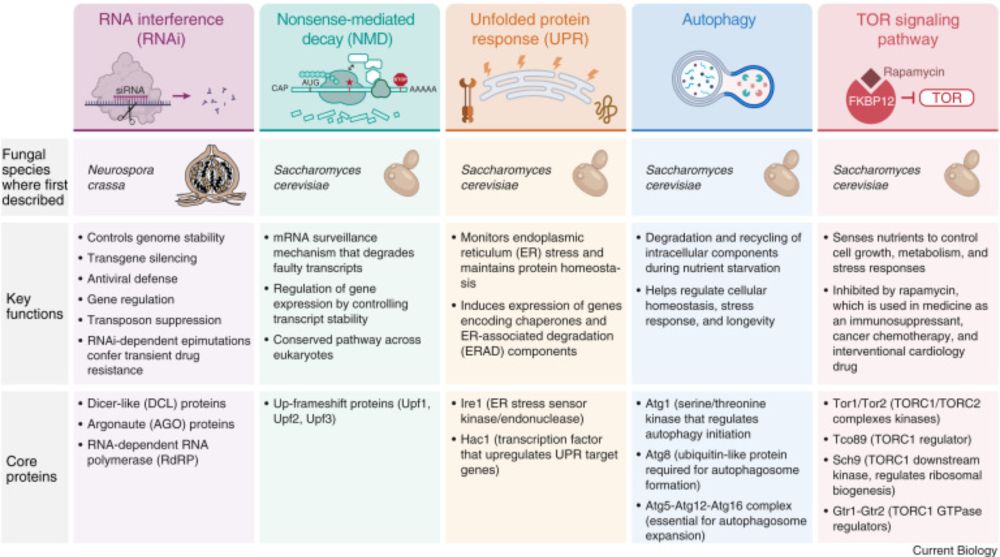
The Fungal Kingdom as a Rosetta Stone for biological discovery – a long-time Current Biology advisory board member, Joseph Heitman, introduces the special issue on ‘The Fungi’. www.cell.com/current-biol...
11.06.2025 14:03 — 👍 51 🔁 32 💬 1 📌 1📢Our synthesis of current knowledge on the fascinating cell of #arbuscular #mycorrhizal fungi is out @currentbiology.bsky.social, part of the special #fungi issue. With @rachaelcargill.bsky.social @tobykiers.bsky.social @thomasshimizu.bsky.social
Open access link: www.cell.com/current-biol...
1/4
Wow... Mycorrhizal fungal highways for plant signals and rhizobia -> Legume-specific recruitment of rhizobia by hyphae of arbuscular mycorrhizal fungi | The ISME Journal | Oxford Academic
28.05.2025 18:33 — 👍 14 🔁 7 💬 0 📌 1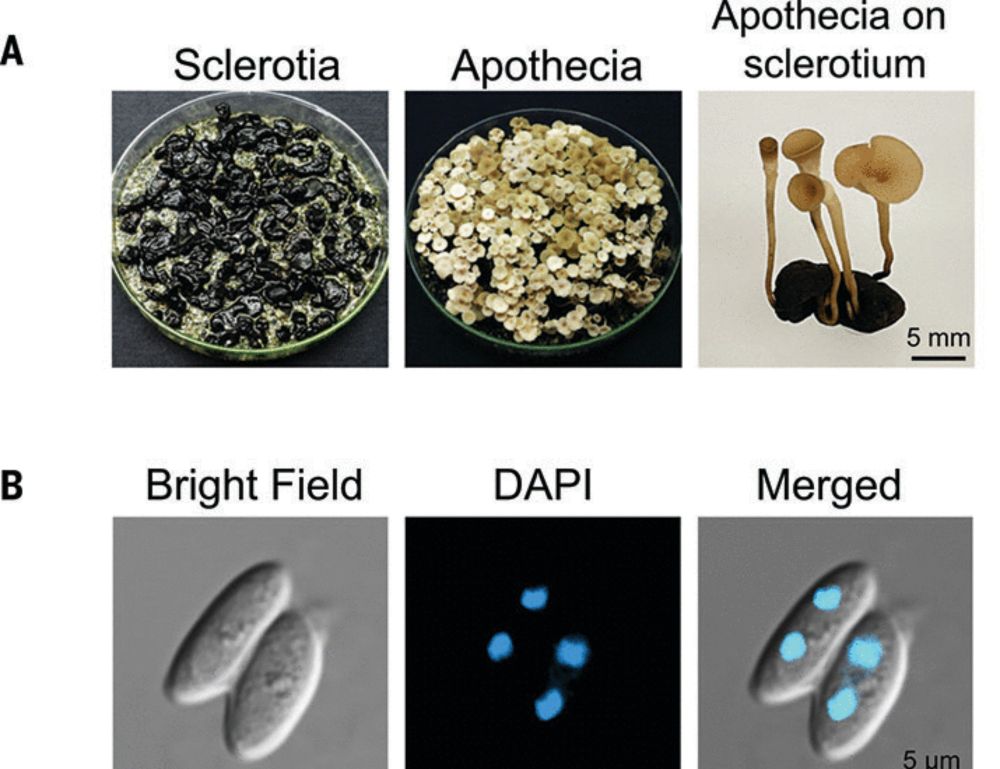
Wow: check it out; these fungi distribute their chromosomes across different nuclei!
Normally each nucleus has a complete set of all chromosomes.
Distribution of haploid chromosomes into separate nuclei in two pathogenic fungi | Science www.science.org/doi/10.1126/...
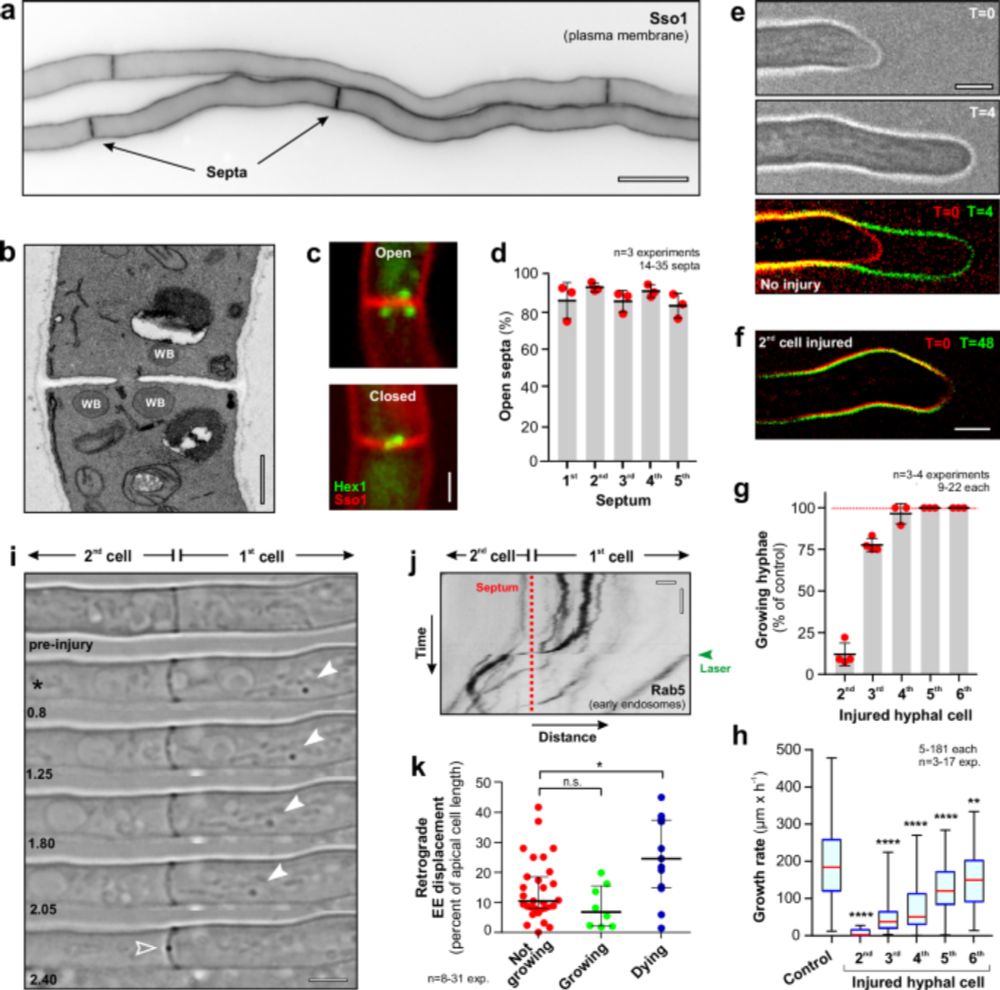
Secretion and endocytosis in subapical cells support hyphal tip growth in the fungus Trichoderma reesei
www.nature.com/articles/s41...
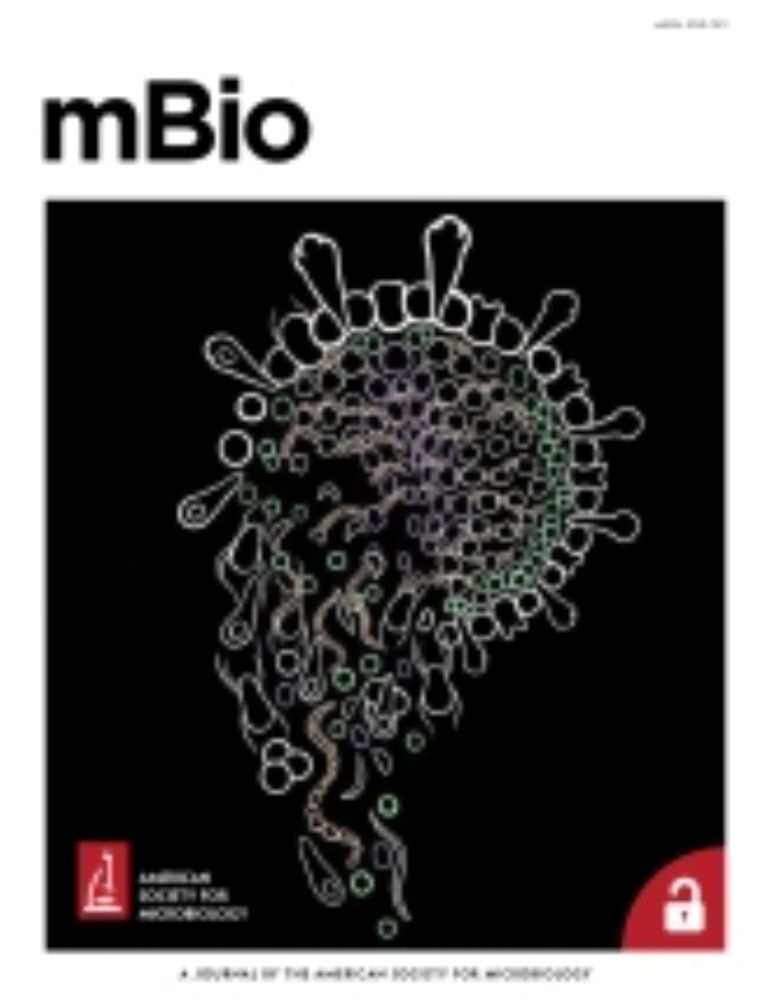
We dive into the dynamics of #starships 🚀 in a fungal pathogen to ask: how might these giant #transposons impact human health? We find they drive genome-wide variation, encode clinically-relevant traits and even transpose within the same strain! 🍄🧪 out today in mBio #goteam doi.org/10.1128/mbio...
13.05.2025 08:11 — 👍 60 🔁 30 💬 0 📌 1
Hope this new review on the fungal cell wall is useful. Dedicated to Salomon Bartnicki-Garcia and his inspiring work on the fungal hypha. A special issue of FGB
Article link:
doi.org/10.1016/j.fg....
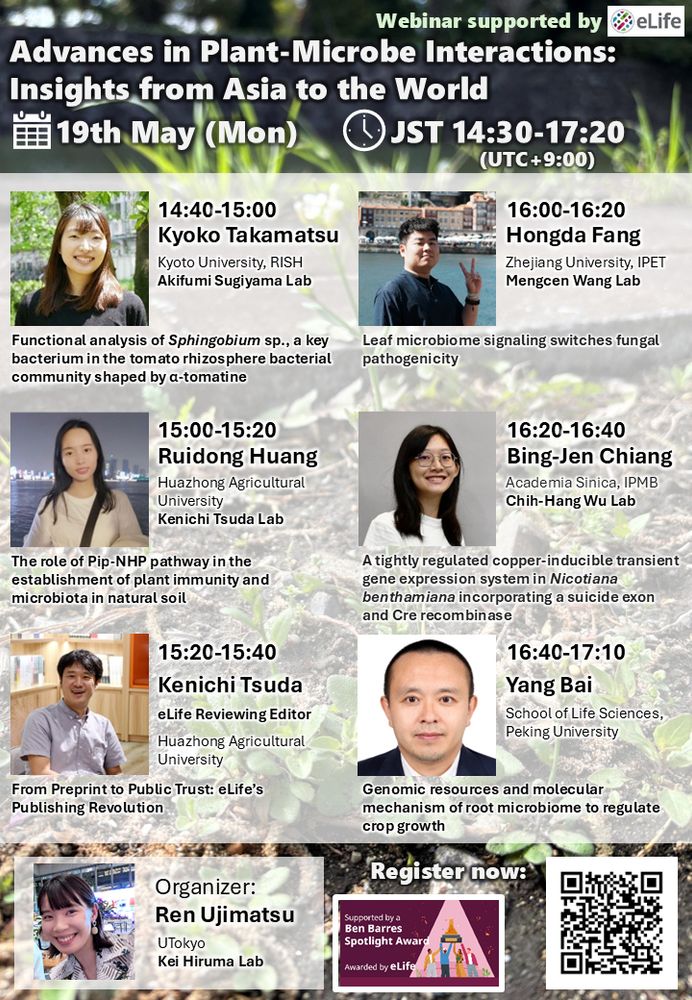
Webinar Alert🌱
Want to learn cutting-edge studies in plant-microbe interaction? Join our webinar "Advances in Plant-Microbe Interactions: Insights from Asia to the World" with
@elifecommunity.bsky.social !
📅 May 19, 2025 | 🕝 JST 14:30–17:20 (UTC+9)
📌Register: u-tokyo-ac-jp.zoom.us/webinar/regi...
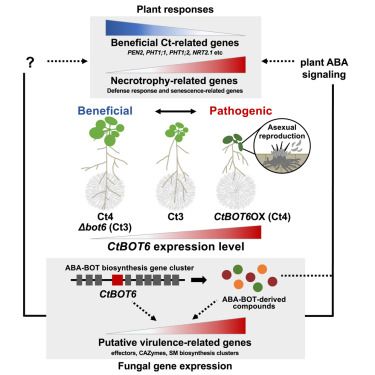
Thrilled to share my first paper published at Current biology!!
We found that the expression level of one single transcription factor converts beneficial root endophyte into pathogenic guy😈 (1/8) www.cell.com/current-biol...
Aspergillus fumigatus secondary metabolite pyripyropene is important for the dual biofilm formation with Pseudomonas aeruginosa | mBio journals.asm.org/doi/10.1128/...
19.03.2025 07:17 — 👍 6 🔁 2 💬 0 📌 0Fungi are extraordinary at solving complex problems.
Incredible to see their strategies highlighted in @nytimes.com by @alanburdick.bsky.social
The article is a visual journey of what we have been documenting in the lab over last few years with our imaging robot
www.nytimes.com/2025/03/01/s...
Published a commentary article on a Nat Microbiol paper from Mengcen Wang group.
The first author Zhe took all the initiative from design, writing, and negotiating with the journal, making a class assignment a paper!
link.springer.com/article/10.1...
Original paper
www.nature.com/articles/s41...
Brilliant story presented by Naoyoshi Kumakura @ecfg172025.bsky.social #ecfg17 on how dihydroxyhexanoic acid mediates pore sizes in appresorium … see more here www.biorxiv.org/content/10.1...
03.03.2025 17:20 — 👍 13 🔁 5 💬 0 📌 0+Our paper now out in @nature.com. We designed and built at AMOLF a robot that maps & tracks fungal networks as they trade nutrients with plants. We discovered how fungi build and operate hyper-efficient 'supply chains' for underground ecosystems.
www.nature.com/articles/s41...
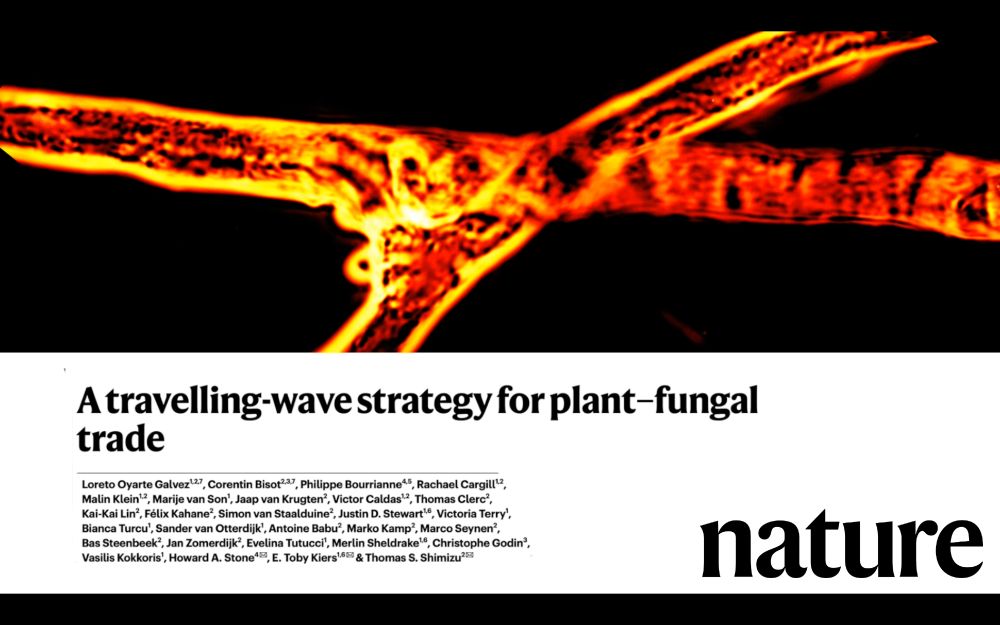
A travelling-wave strategy for plant-fungal trade. An image of a microscopic view of fungi. Nature logo.
Our newest research on plant-fungal trade published today in @nature.com.
The work, led by scientists from Vrije Universiteit, Princeton University, SPUN & AMOLF combines robotics, mycology & biophysics to reveal underground supply-chain dynamics.
Open access:
www.nature.com/articles/s41...

Axel Brakhage is confirmed as the speaker for the Pontecorvo lecture that kicks off Asperfest on 1st March, followed by the welcome reception.
Looking forward to seeing you all there!

Turning antagonists into allies: Bacterial-fungal interactions enhance the efficacy of controlling Fusarium wilt disease
#ScienceAdvances from Dongyang Liu/Qirong Shen at Nanjing Agricultural University
www.science.org/doi/10.1126/...

Review in Nature
Case et al.
Fungal impacts on Earth’s ecosystems
www.nature.com/articles/s41...
New mechanism for how soil bacteria may help to protect plants from soil-borne pathogenic fungi. Maybe this will disrupt interactions with mycorrhizal fungi?
Soil microbiome bacteria protect plants against filamentous fungal infections via intercellular contacts | PNAS
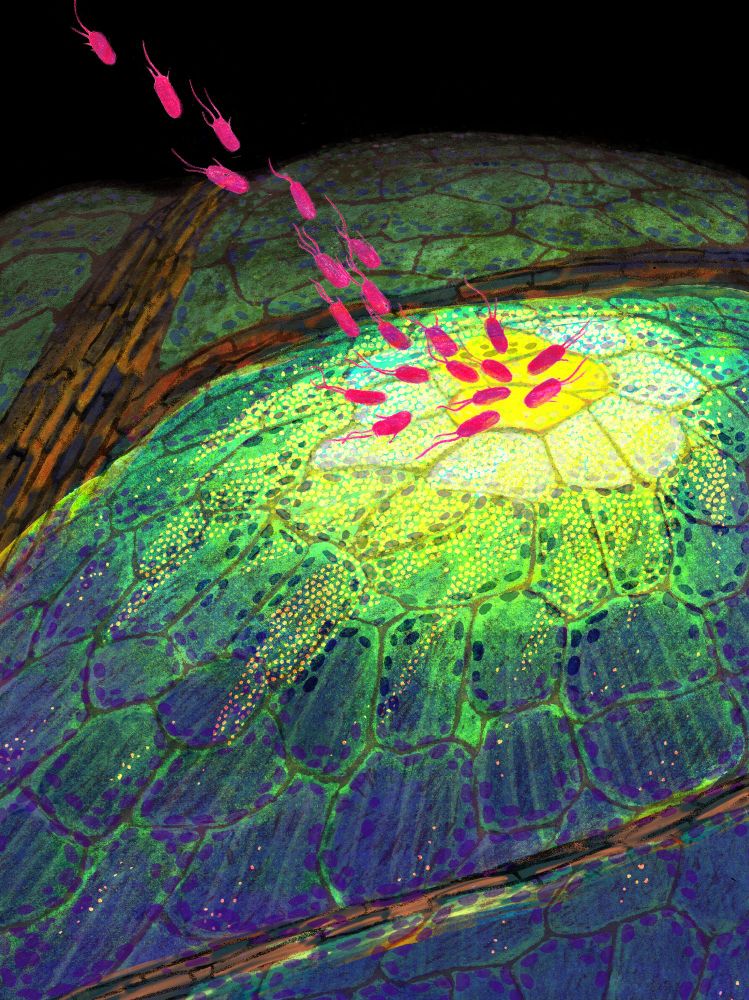
New year, new paper! Now published in @nature.com. We identified and characterised diverse immune cell states in plants under pathogen attack. My postdoc work in the Ecker lab at @salkinstitute.bsky.social. A thread (0/n)
#PlantScience
www.nature.com/articles/s41...

Loved this new work of art produced for IMC12. It was so cool on the big screen! Now we can all enjoy.
www.youtube.com/watch?v=LUct...